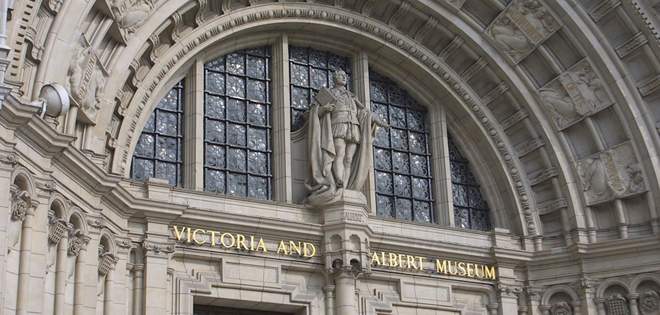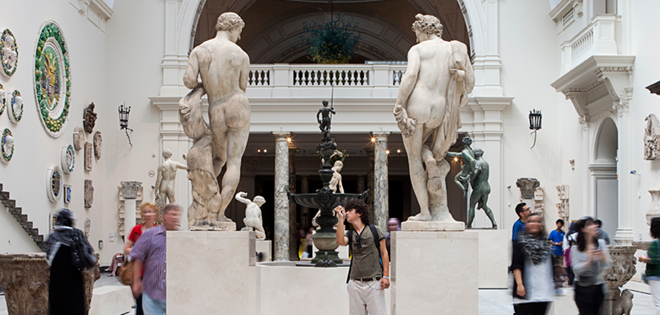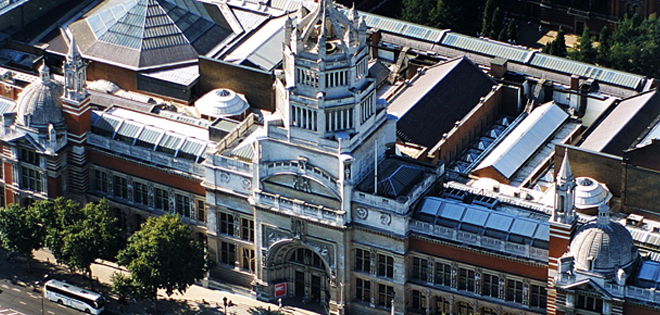The Museum was established in 1852, following the enormous success of the Great Exhibition the previous year. Its founding principle was to make works of art available to all, to educate working people and to inspire British designers and manufacturers. Profits from the Exhibition were used to establish the Museum of Manufactures, as it was initially known, and exhibits were purchased to form the basis of its collections.
The Museum moved to its present site in 1857 and was renamed the South Kensington Museum. Its collections expanded rapidly as it set out to acquire the best examples of metalwork, furniture, textiles and all other forms of decorative art from all periods. It also acquired fine art - paintings, drawings, prints and sculpture - in order to tell a more complete history of art and design.
Generous funding and a less competitive art market than today's meant that the young Museum was able to make many very important acquisitions. The Museum itself also grew, with new buildings being added as and when needed. Many of these buildings, with their iron frames and glass roofs, were intended to be semi-permanent exhibition halls, but they have all survived and are one of the finest groups of Victorian buildings in Britain.
In 1899, Queen Victoria laid the foundation stone of a new building designed to give the Museum a grand façade and main entrance. To mark the occasion, it was renamed the Victoria and Albert Museum, in memory of the enthusiastic support Prince Albert had given to its foundation.
Throughout the 20th century, the collections continued to grow. While expanding its historical collections, the V&A also maintained its acquisition of contemporary objects, starting with a collection of Art Nouveau furniture in 1900.
The Museum's ceramics, glass, textiles, dress, silver, ironwork, jewellery, furniture, sculpture, paintings, prints and photographs now span the cultures of Europe, North America, Asia and North Africa, and date from ancient times to the present day.






